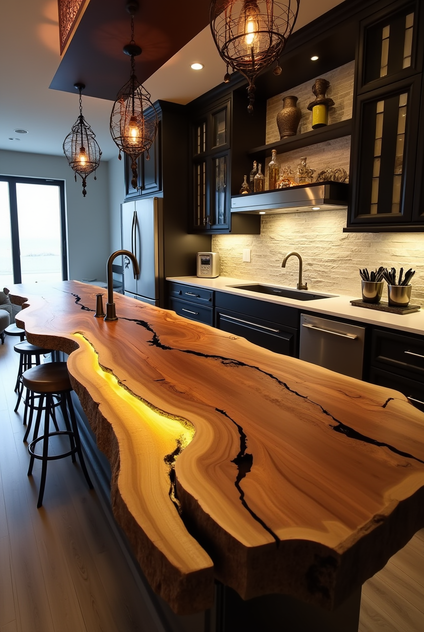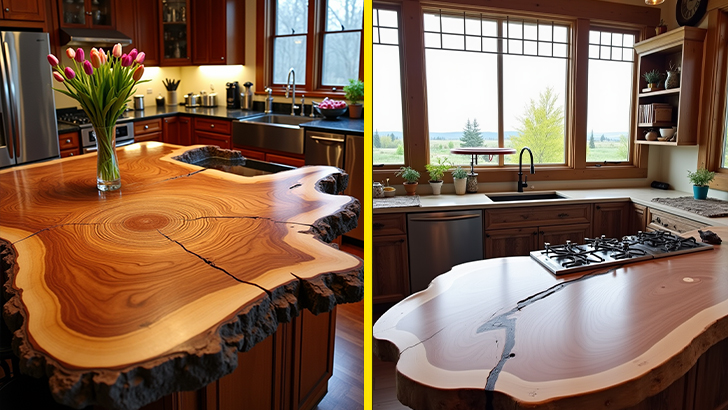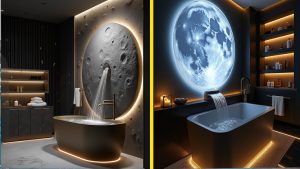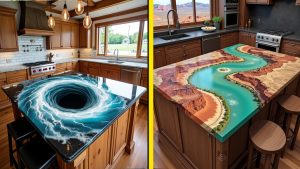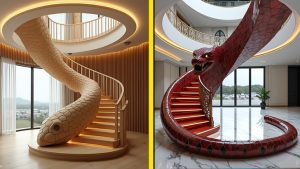In the realm of interior design, the kitchen stands as a focal point where functionality meets aesthetics. Among the myriad of design elements, countertops play a pivotal role in defining the kitchen’s character. One trend that has garnered significant attention is the use of live edge wood slab countertops. These countertops seamlessly blend the raw beauty of nature with modern design sensibilities, offering a unique and captivating addition to any kitchen space.
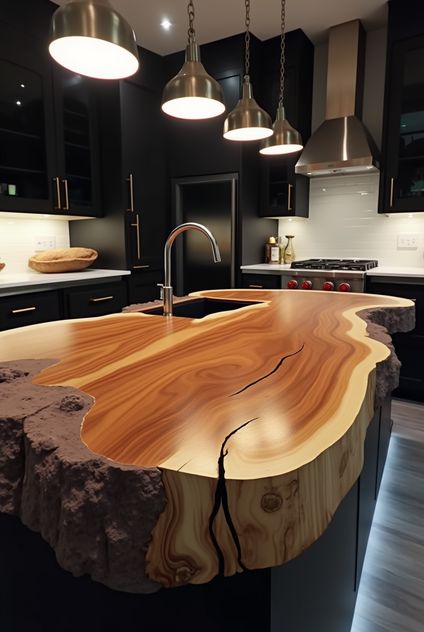
What Are Live Edge Wood Slab Countertops?
Live edge wood slab countertops are crafted from natural wood slabs that retain the tree’s original, unfinished edge. This approach preserves the organic contours and imperfections of the wood, showcasing its innate beauty. Each piece is distinct, with unique grain patterns, knots, and edges that tell the story of the tree it originated from. This individuality ensures that no two countertops are alike, making them a personalized centerpiece in any kitchen.
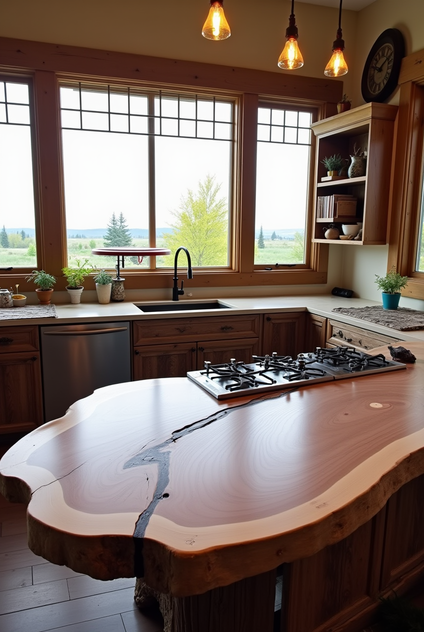
Types of Wood Used
The selection of wood species significantly influences the appearance and durability of live edge countertops. Popular choices include:
Walnut: Renowned for its rich, dark hues and intricate grain patterns, walnut adds a touch of elegance and warmth to the kitchen.
Maple: With its lighter color and smooth texture, maple offers a clean and contemporary look, complementing various design styles.
Cherry: Characterized by its reddish-brown tones that deepen over time, cherry wood brings warmth and sophistication to the space.
Each species offers distinct aesthetics and properties, allowing homeowners to choose the perfect match for their design vision and functional needs.
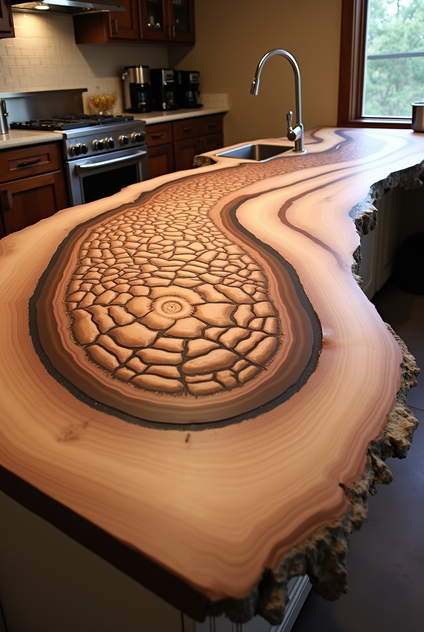
Customization Options
One of the standout features of live edge countertops is their versatility in customization. Homeowners can tailor these countertops to align with their kitchen’s style and personal preferences. Customization options include:
Finishes: Selecting the appropriate finish enhances the wood’s natural beauty and provides protection. Options range from natural oils and waxes that highlight the grain to lacquers and polyurethanes that offer a glossy sheen and increased durability.
Edge Treatments: While the live edge is a defining characteristic, some may opt for additional treatments such as smoothing rough areas or incorporating resin fills to address natural voids, adding both functionality and artistic flair.
These customization avenues ensure that the countertop not only fits seamlessly into the kitchen’s design but also reflects the homeowner’s unique taste.
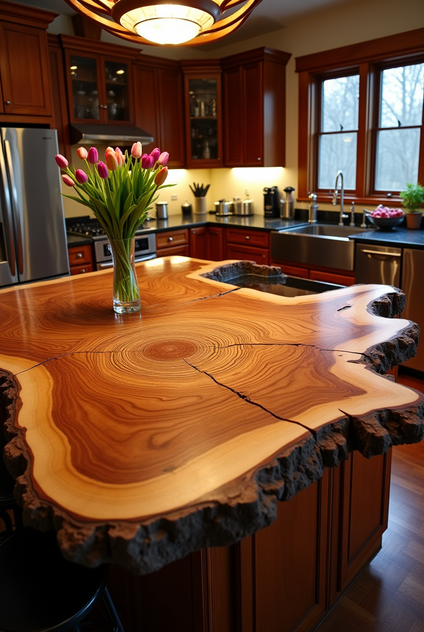
Crafting Process
The journey of creating a live edge wood slab countertop is a meticulous process that combines artistry with craftsmanship:
Sourcing the Wood: Selecting high-quality slabs from reputable suppliers is crucial. Many artisans prioritize sustainable sourcing, choosing slabs from dead-standing trees or reclaimed wood to minimize environmental impact.
Preparation: The chosen slab undergoes drying to reduce moisture content, preventing future warping or cracking. This step is essential for ensuring the countertop’s longevity.
Shaping and Sanding: Artisans carefully shape the slab, preserving its natural edge while ensuring it fits the designated space. Sanding smooths the surface, enhancing the wood’s tactile appeal.
Finishing: Applying the selected finish protects the wood and accentuates its natural colors and patterns. Multiple coats may be applied, with sanding between each, to achieve the
